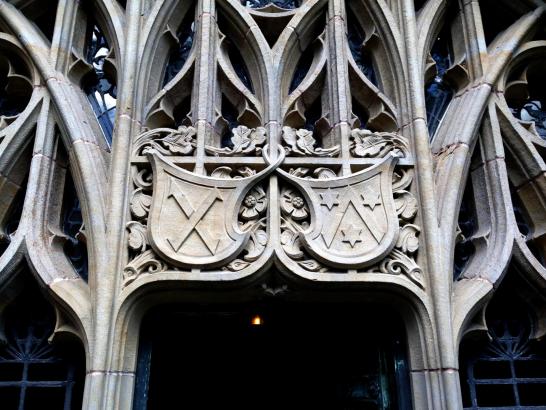Have you ever looked closely at the stone carvings that decorate the Selin Courtyard in Sterling Memorial Library? If you've never visited the courtyard, it's worth a trip. Find it by taking a right at the circulation desk after coming through the main entrance on High Street (the door will be on your right), or enter through the Wall Street entrance, walk down the corridor, and go through the door on your left.
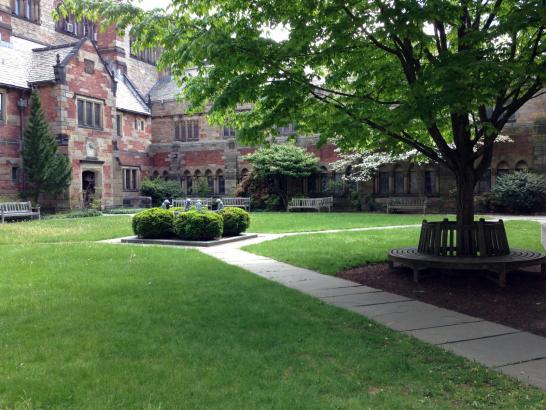
After you enter, take a look at the windows to your right. There, you'll see the names of many famous printers, including Nicholas Jenson, William Caslon, John Baskerville, and Giambattista Bodoni (all of these printers happen to have typefaces named by or for them: Jenson, Caslon, Baskerville, and Bodoni).
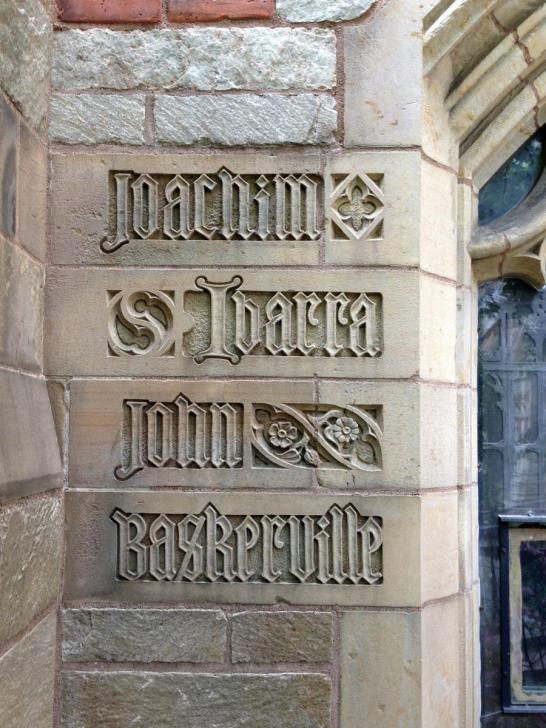
Note how Theodore Low De Vinne's inscription (below) has been rendered in a version of the eponymous De Vinne typeface with its vaguely Lombardic letterforms; most of the other carved names use blackletter forms.
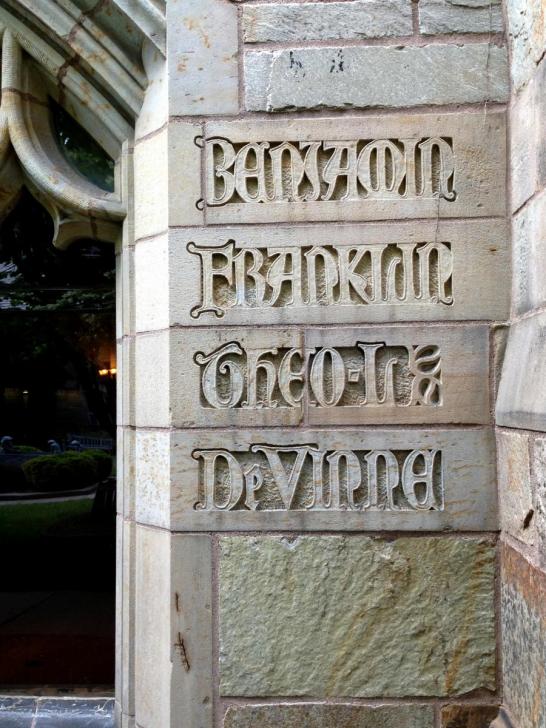
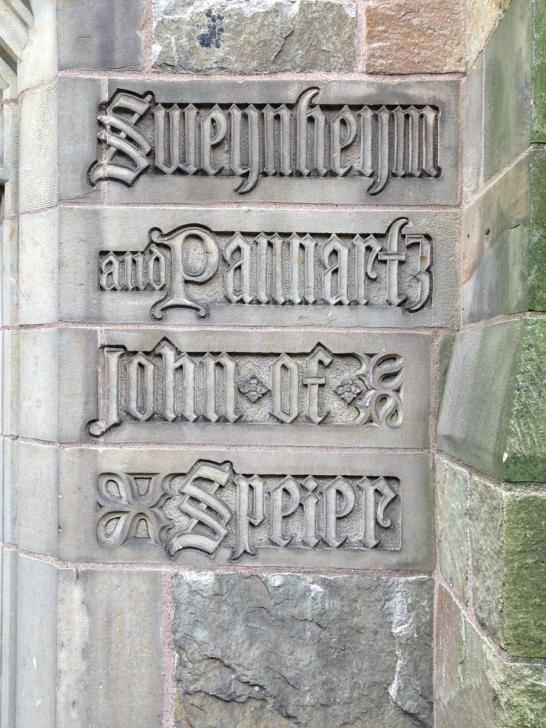
The wall that you face immediately upon entering the courtyard pays tribute to famous artistic printmakers, including Albrecht Durer, Hans Holbein, Francisco Goya, and William Blake.
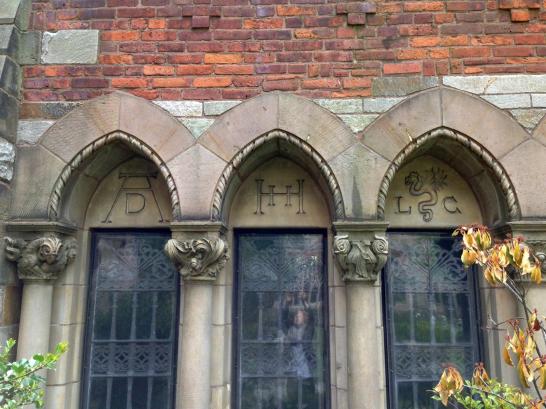
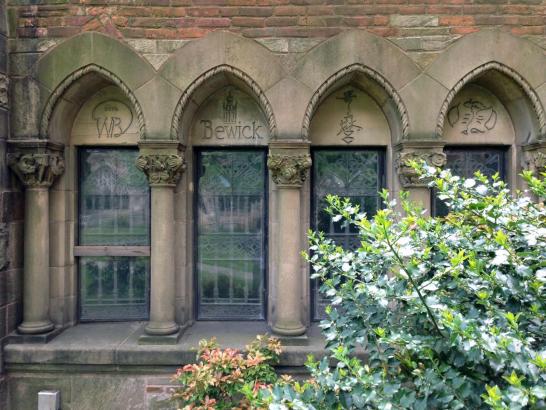
Every mark and phrase in the courtyard is historically significant. According to Volume 5, Number 4 of the Yale University Library Gazette (published in April 1931), the Southeast Entrance (pictured below) pays tribute to "Gutenberg and his press, with the...inscription taken from the colophon of Johannes Balbus's Catholicon printed in 1460, and attributed to Gutenberg's press... Two shields, one on each side of the arch of the entrance: Head of Gutenberg, 'In the beginning was the Word.' Four bosses, in the arch: mallet and shooting-stick, galley, ink-ball, type mould."
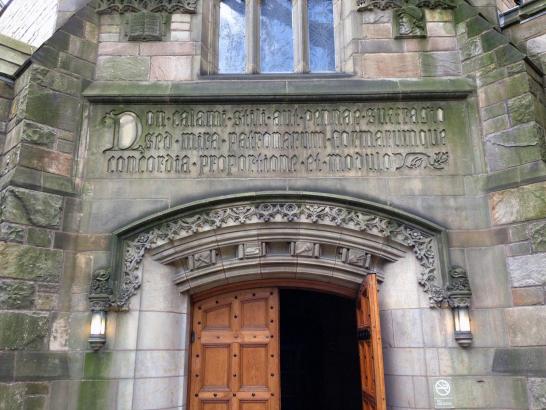
(The Latin inscription reads "Non calami stili aut pennae suffragio sed mira patronarum formarumque concordia proportione et modulo". Latin scholars, feel free to leave your translations in the comments!)
See the courtyard and unravel more of its mysteries yourself. Learn more about its history and the significance of its ornament in the Yale University Library Gazette, which you can access through JSTOR.
